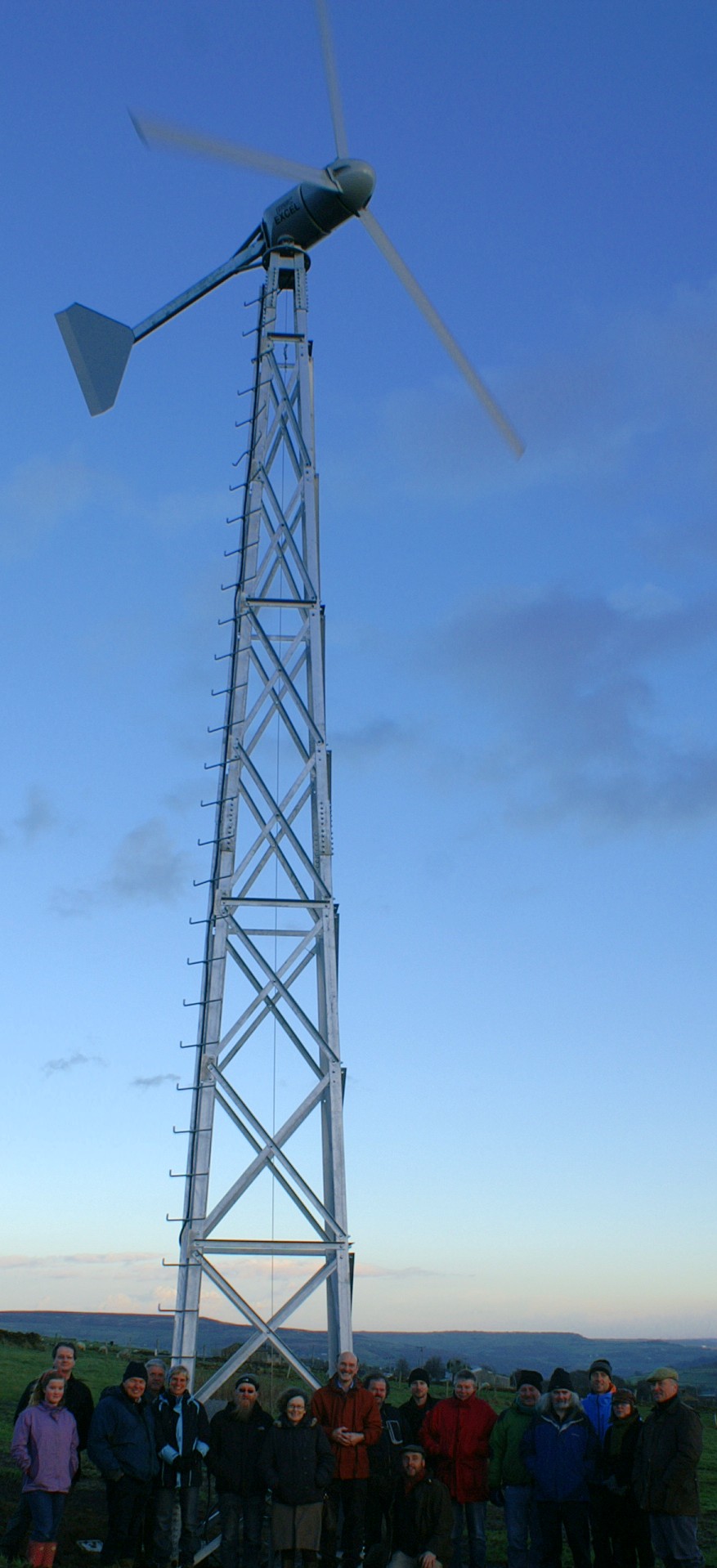
This blog post is a brain dump of my thoughts whilst trying to bottom the position with regard to the various reliefs and subsidies available to community energy projects. In particular, I am unclear of the whole picture of how Feed in Tariffs (FITs) fit with Enterprise Investment Tax relief – EIS and SEIS; reliefs which have been particularly useful for community share offers, but which are also deemed to be State Aid despite not being received by the enterprise. For energy projects in particular if State Aid is used for installation costs then the installation cannot receive FIT.
This exploration was first prompted by my recent experience as a Director of Pennine Community Power (PCP) Limited – a community energy project based in West Yorkshire. PCP installed a 10kW wind turbine, funded by investment from a community share issue and a grant from the Village SOS strand of Big Lottery.
Despite being advised that 1) Lottery funding wasn’t State Aid, and that even if it were, it was compatible with receipt of FIT, PCP (and anecdotally 50 other community projects) was informed in early 2013 of the decision of OFGEM to suspend their FIT payments. The suspension was due to the receipt of the Village SOS grant which PCP had declared – the advice we had been given was both wrong and out of date. The FIT payments of PCP have just been reinstated after the repayment to Big Lottery of the part of the grant which was used for the installation of the turbine. This required a further community share offer.
What is State Aid?
The UK government defines State Aid thus “State Aid refers to forms of assistance from a public body, or publicly-funded body, given to selected undertakings (any entity which puts goods or services on the given market), which has the potential to distort competition and affect trade between member states of the European Union.” https://www.gov.uk/state-aid
State Aid is controlled by EU regulations in order to prevent distortion of markets and unfair competition. It does this by prohibiting it except in certain circumstances. The EU regulations can be seen here: http://ec.europa.eu/competition/state_aid/overview/index_en.html
Funding which is State Aid can be allowed by the EU – it is then an “approved scheme”. EIS falls into this category. See here for information on EIS State Aid approval http://www.taxjournal.com/tj/articles/new-eis-and-vct-limits-receive-state-aid-approval-47821
State Aid and FIT
It is normally not possible for an organisation which has received public funds which have been used for the purchase of or installation of renewable generation equipment to qualify for FIT. The principle being that that the subsidy is being given twice. https://www.ofgem.gov.uk/environmental-programmes/feed-tariff-fit-scheme/applying-feed-tariff/grants
It used to be possible if the project received less than £150K (200,000 Euros) in total benefit over 3 years , but this exemption was removed in 2011. It is still possible to use State Aid “in respect of reasonable additional costs of an installation to avoid or mitigate environmental harm” and receive the FIT, but not purchase or installation costs of the generating equipment.
EIS and FIT
In 2012 the government added “Feed in Tarriffs Businesses” to the list of excluded activities for receipt of EIS, however after consultation, they provided a specific exemption for “community interest companies, co-operative societies, community benefit societies and Northern Ireland industrial and provident societies”. Hydro generation and anaerobic digestion were also exempted. http://www.fitariffs.co.uk/faqs/item/549/ So EIS and FIT are compatible for most community energy projects, as they tend to use the IPS legal form, but is that the whole story?
SEIS and FIT
The position would appear to be the same for SEIS, guidance at http://www.hmrc.gov.uk/seedeis/how-to-qualify.htm states that “It may not receive more than £150,000 in total under the scheme. That figure of £150,000 must also take account of any other State Aid received by the company in the three years preceding the relevant share issue which is de minimis aid according to EU regulations. (HMRC would not expect this to be common and if the company has had any such de minimis State Aid it will have been advised accordingly by the body responsible for administering that aid). If the relevant issue of shares takes the total over £150,000, then the excess will not qualify for relief.”
HMRC also state in the on-line manual:
“The amount of all SEIS investment, together with any other de minimis State aid received by the company in the 3 years to the date of the latest SEIS investment, must not exceed £150,000.”
http://www.hmrc.gov.uk/manuals/vcmmanual/VCM34130.htm
Issues unresolved:
FIT used to be treated under the EU de minimis regulations, but may now be treated differently as “an approved scheme”. I can’t really find definitive guidance.
- Is a community energy project limited to £150K EIS+FIT in a 3 year period? PCP has been advised so, but is under the limit, so hasn’t queried advice. Whether EIS is under “de minimis regulations” or an “approved scheme” will be important here. Again I can’t find definitive guidance.
- If limited to £150K what would happen if exceeded?
- Does EIS State Aid refer to the share capital, the maximum potential relief to all investors or the actual relief claimed?